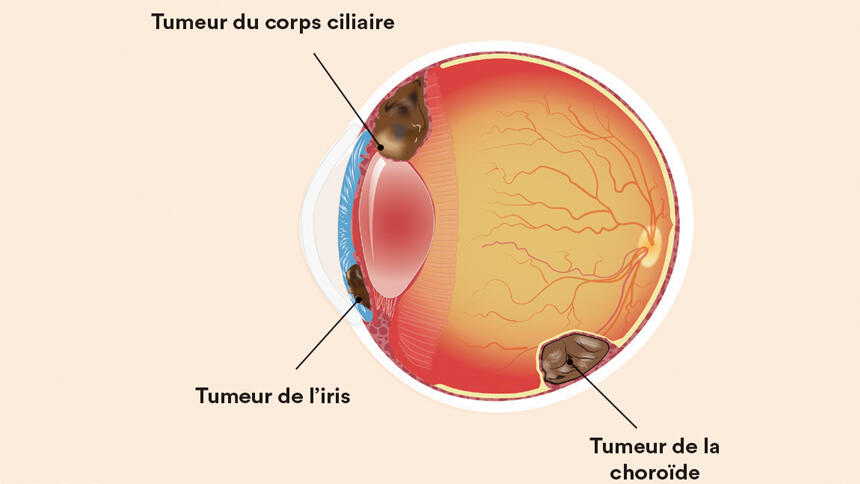Diseases
Uveal melanoma

Definition
Melanoma of the uvea (the vascular and nourishing tissue of the eye) is a cancerous tumour that develops from melanocytes. These are the pigmented cells that give eyes their colour and are present in the iris, ciliary body and choroid. This disease, which generally appears after the age of 55, is rare (six to seven people per million population are diagnosed each year in Caucasians, for example. However, it is the most common eye tumour in adults. It can metastasise, first to the liver before invading other tissues and organs and threatening life itself.
Symptoms
In the early stages, melanoma often causes no symptoms. It is only when it affects one of the structures responsible for vision that vision is impaired. When the tumour causes fluid to leak under the retina, the retina becomes detached and patients can see flashes. They may also see distorted lines or perceive a veil in front of the eyes. If the tumour is in the ciliary body, it can lead to a cataract, blurring vision. If it bleeds or spreads its pigments into the vitreous (the transparent gelatin inside the eye), those affected see floating spots.
Treatment
Proton therapy (radiotherapy using protons) can treat uveal melanoma. It enables the tumour to be targeted with great precision, sparing the structures in the eye that are essential for vision. The Jules-Gonin Eye Hospital is one of the few centres in Europe (there are only six) to offer this technique. The hospital works in partnership with the Paul Scherrer Institute in Villigen (Aargau). There are two alternative solutions. There is radiotherapy using a radioactive plate for small tumours. For more advanced cases, there is enucleation, which involves removing the diseased eye and fitting a cosmetic prosthesis.
Source : Bien vu!
Content reviewed and checked on 19.12.2024.

